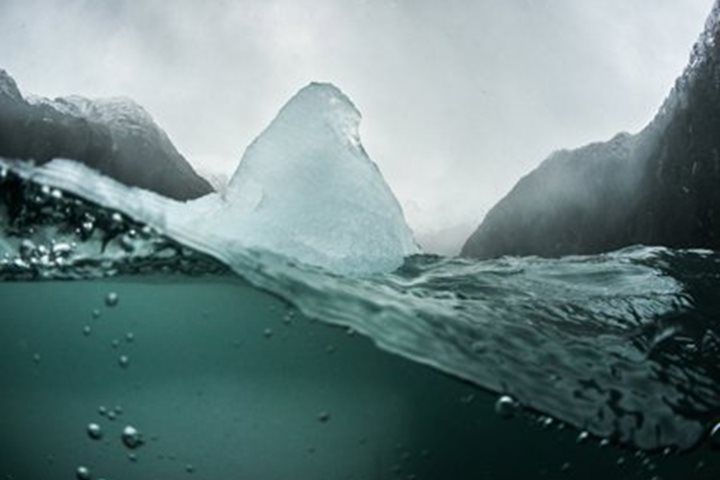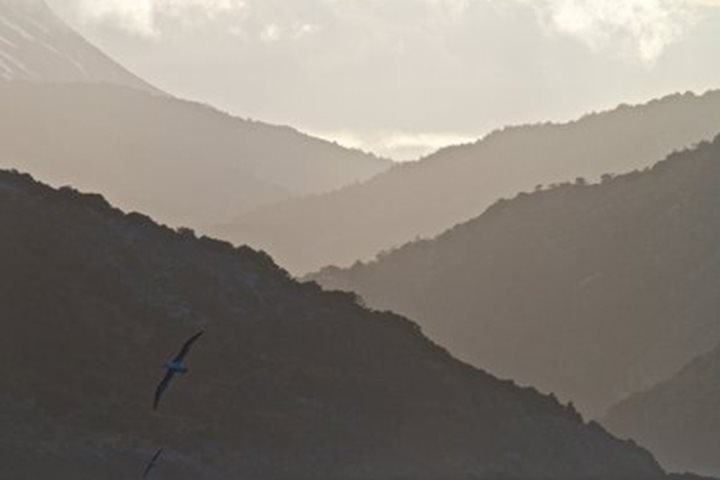A damp and windy day greeted our continued transit through the Chilean fjords. We awoke near the western edge of the Straits of Magellan to strong winds and a weather ceiling so low it was as if we were being swaddled by the clouds—inducing an unexpected feeling of calm. With hot beverages in hand and plenty of vantage points from the ships windows, we enjoyed a leisurely morning, watching the landscape glide past from the comfort of our temporary home.
By early afternoon we entered a fjord system known as Estero Las Montanas. This long, narrow, north/south oriented fjord brought the landscape in close enough that we could see both shorelines through the mist. Glaciers poured down out of the whiteness, slicing through verdant green slopes that extended upwards into the low cloud cover themselves. Since this waterway comes to a dead end at its northern extremity our destination was to a glacier called Ventisquero Bernal. Like the others, it descended out of the clouds, but, unlike the rest, its terminus lies in a pool of its own milky melt water. Dammed up by the very debris it carried with it downstream, the foot of the Bernal glacier sits in this freshwater lagoon, cut off from the sea. Through the consistent rain a band of hardy explorers braved the elements for a chance to walk up to, and even touch this very accessible body of ice. Winding through a natural rock garden of glacially polished stone, a handmade trail led us over the teal colored lagoon before putting us right into the rubble field at the glaciers feet. Drawn to the ice as if in a tractor beam many a soggy, bundled form approached its white façade, eager to stand in the presence of this glittering giant.
Back aboard National Geographic Explorer, with more warm drinks in hand, we finished the evening with a tricky bit of navigation by our bridge team. To the east of Estero Las Montanas is the last obstacle between us, and our destination for tomorrow, Puerto Natales. A narrow sliver of water known as the Kirke Narrows poses a challenge to navigation due to the powerful currents that rage through its 200-meter-wide pinch point. By sending a scout boat ahead—to relay back to the bridge when the current reaches its slowest speed—the bridge was able to approach at the safest point in the tidal cycle and offer an exciting transit through this mountainous, rugged section of the Chilean Fjord system.







